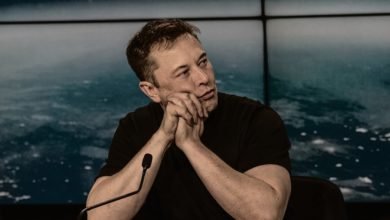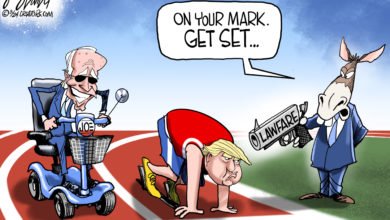Why the EV Market Is Sputtering
Last month Ford announced it was slashing in half its production goal for its most popular electrical vehicle, the F-150 Lightning pickup truck.
Bloomberg News reported that the company’s flagship plant in Dearborn, Michigan now intends to produce 1,600 vehicles per week in 2024, down from 3,200 in 2023.
The move comes just months after Ford announced it was slashing prices on the Lightning by $10,000. And though the company cited lower “battery raw material costs and continued work on scaling production and cost” for its price cut, it’s becoming painfully obvious that low demand for EVs was the primary catalyst.
Over the summer, numerous news reports showed manufacturers had vastly overestimated the market demand for EVs, evidenced by a massive glut on dealer lots.
Many speculated that the excess amount stemmed from the tightened money supply following a series of Federal Reserve interest rate hikes. The problem with this hypothesis was that the glut of EVs was high even compared to that of gasoline-powered cars.
As Axios reported at the time, the 92-day supply of EVs on dealership lots was “nearly twice the industry average.”
Massive Capital Investment a Mistake?
Needless to say, this was not the plan.
Following a record-breaking year in EV sales in 2021, many automobile manufacturers bet big on the future of EVs. Ford, for example, in 2022 announced it would boost spending on EVs to $50 billion through 2026 — a more than 50 percent increase — and create an entire new EV division.
In hindsight, Ford’s move looks absurd, considering the plunging demand for electric vehicles. But to be fair, things looked a lot different in early 2022. EVs were experiencing a second straight record-breaking year in sales, and few analysts were predicting that trend would lose steam in 2023.
On the contrary, in April, the International Energy Agency released a report projecting a 35 percent increase in global EV sales in 2023, citing strong market demand in “China, Europe, and the United States.”
Additionally, Ford could rely on government tax breaks to boost demand in the US, where consumers are eligible to receive up to $7,500 in tax credits when purchasing a new EV.
Despite the tax incentive, consumers are not adopting EVs anywhere close to as quickly as analysts projected, with EVs expected to make up just 9 percent of light-duty vehicle sales in 2023, according to EV Hub, an Atlas Public Policy project that tracks EV sales.
The Trade-Offs of EVs
The news that the EV market is struggling likely thrills some people and angers others.
In one sense, this is strange. Why would consumers be cheering for the success or failure of a product? But it makes more sense once one realizes that the electrical vehicle has become a political symbol to some degree, championed by those who see them as a virtuous product that can protect humanity from climate change and opposed by many who resent their preferred tax status.
Politics aside, there’s nothing inherently wrong with electric vehicles. Many EVs are fantastic, though all come with trade-offs like any product.
For example, the Tesla Model Y Long Range has unworldly acceleration (it goes zero to sixty in 4.8 seconds) and impressive top-end speed (135 mph). It has solid range (330 miles), seats up to seven people, and can even drive itself.
The cons? Well, the price of a Model Y starts at $48,000. That’s not Tesla’s most expensive vehicle by a long shot — its Model X Plaid starts at twice that — but it’s not cheap, and the price tag only gets higher with more accompaniments.
Unaffordability is not the only con of EVs (more on that later), but it is among the biggest reasons Americans have been slow to adopt EVs, an abundance of evidence shows.
“We looked at 13 years’ worth of electric vehicle prices in the US, and in inflation-adjusted dollars, the average price of an EV is going up, not down,” said Ashley Nunes, a senior research associate at Harvard Law School, in a November BBC report. “[D]epending on the day, a difference between $15,000 and $20,000… it’s pretty easy to figure out which option [consumers are] going to select.”
There are other trade-offs, of course. It’s not just that EVs tend to have much lower range than gas-powered cars. There’s also the matter of where one will charge one’s vehicle when it gets low on juice.
This is a major sticking point for Americans. A study by the Energy Policy Institute at the University of Chicago and the Associated Press-NORC Center for Public Affairs Research found that 77 percent of respondents cited a lack of charging stations as a reason for not buying an EV, second only to high cost (83 percent).
This concern is justified.
An analysis from McKinsey & Company shows the US would need to expand its charging infrastructure roughly 20-fold to have enough charging stations to meet the federal government’s target of having EVs make up 15 percent of all vehicles by 2030.
Gross Incompetence?
Some might see the reluctance of US consumers to adopt EVs more quickly as a flaw in America’s economic system, but it’s actually a strength.
Economics, above all else, is the study of how scarce resources are allocated. Because economies are infinitely complex, resources are most efficiently allocated through market forces, which involve buyers and sellers who possess local knowledge making rational decisions (such as not buying an EV if you can’t afford one or reliably power it).
A quick glance at history and a basic understanding of economics show central planning can never match the efficiency of markets, and this thesis is buttressed by the federal government’s clumsy efforts to coerce Americans into EVs.
Even as the federal government forgoes hundreds of millions of dollars each year due to tax credits for new EV purchases, it has demonstrated a gross incompetence in providing the necessary infrastructure to support these vehicles.
President Biden’s Infrastructure Investment and Jobs Act, passed in 2021, allocated $7.5 billion in funding for charging infrastructure. Its goal was to erect 500,000 public EV charging stations across the US.
But as Politico reported earlier this month, not a single charging station has been built with this initiative. (Zero!) Though many states have been awarded contracts, just two — Pennsylvania and Ohio — have even broken ground.
Moreover, the federal government is actively preventing the erection of charging stations in perhaps the most obvious and convenient place: rest stops.
The Environmental Downside of Electric Vehicles
Some might argue this inefficiency is unfortunate but nevertheless necessary since humans must be weaned off fossil fuels to save humanity from climate change, but this argument fails for several reasons.
For starters, EVs come with their own carbon footprint, and it’s not small. EVs actually require much more CO2 to produce than gas-powered cars.
A few years ago, German researchers estimated it takes 30,000 pounds of CO2 to produce a single Tesla battery. Meanwhile, Volvo executives have admitted that its popular C40 Recharge must be driven some 70,000 miles before its carbon impact is lower than its petrol-powered counterpart (unless it’s running on electricity produced solely from wind power, which is not going to happen).
The high carbon footprint of EVs can be offset if the vehicles run long enough because they generate less CO2 during their lifecycle. But no matter how you slice the data, it’s clear that EVs are not the green panacea many have come to believe. The Wall Street Journal concluded that a complete shift from gas-powered cars to EVs would reduce global CO2 emissions by about 0.18 percent.
Moreover, EVs come with other environmental trade-offs that rarely receive attention, such as the vast amounts of copper, lithium, cobalt, and other minerals that require strip-mining and other land-intensive (and labor-intensive) processes to unearth.
The Real ‘Captain’ of the Ship
The bottom line is that the US EV market is a mess, one many analysts say will get worse before it gets better. And automakers like Ford who bet big on the future of EVs are likely looking at pain, at least in the short term.
It didn’t have to be this way.
EV technology — especially motors and batteries — is improving rapidly, and a marketplace for electric vehicles would likely have emerged even without the many federal intrusions that have added confusion to the marketplace.
Ford’s decision is an important reminder of who the real boss is in a free-market economy. It’s not Ford. And it’s certainly not the federal government.
“The capitalists, the entrepreneurs, and the farmers are instrumental in the conduct of economic affairs. They are at the helm and steer the ship. But they are not free to shape its course,” the economist Ludwig von Mises famously explained in his seminal work Bureaucracy. “They are not supreme, they are steersmen only, bound to obey unconditionally the captain’s orders. The captain is the consumer.”
Ford would do well to start listening to the real captains of the economy and pay less attention to the promises of politicians and bureaucrats trying to guide the ship.
Content syndicated from Fee.org (FEE) under Creative Commons license.
Agree/Disagree with the author(s)? Let them know in the comments below and be heard by 10’s of thousands of CDN readers each day!




